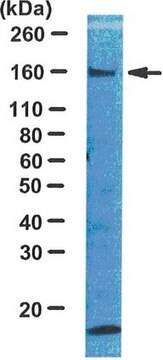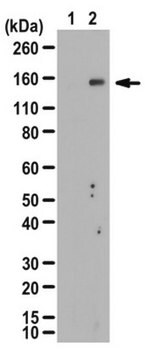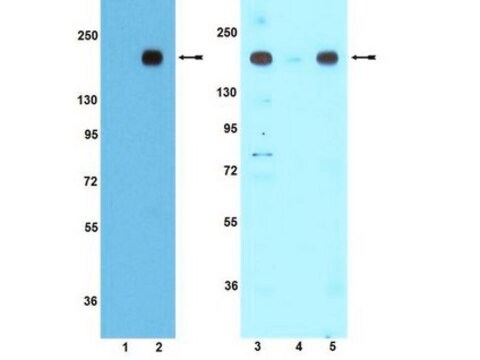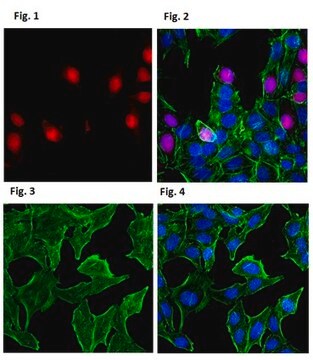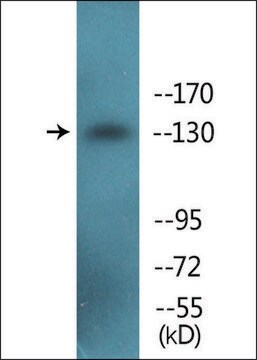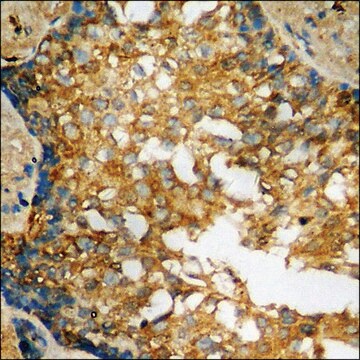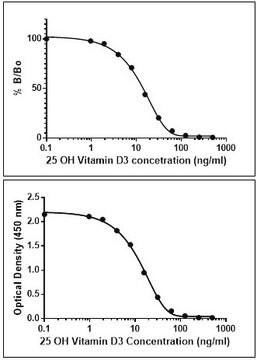05-1087
Anti-phospho-IRS1 (Ser307 mouse/ Ser312 human) Antibody, clone 24.6.2
clone 24.6.2, from mouse
Synonyme(s) :
insulin receptor substrate 1
About This Item
Produits recommandés
Source biologique
mouse
Niveau de qualité
Forme d'anticorps
purified antibody
Type de produit anticorps
primary antibodies
Clone
24.6.2, monoclonal
Espèces réactives
bovine, pig, mouse, monkey, canine, rat, human
Technique(s)
immunocytochemistry: suitable
immunofluorescence: suitable
immunoprecipitation (IP): suitable
western blot: suitable
Isotype
IgG2aκ
Numéro d'accès NCBI
Numéro d'accès UniProt
Conditions d'expédition
wet ice
Modification post-traductionnelle de la cible
phosphorylation (pSer307 )
Informations sur le gène
bovine ... Irs1(538598)
dog ... Irs1(486148)
human ... IRS1(3667)
mouse ... Irs1(16367)
pig ... Irs1(100512686)
rat ... Irs1(25467)
rhesus monkey ... Irs1(707870)
Description générale
Spécificité
Immunogène
Application
Qualité
1:1,000 dilution of this antibody was used to detect IRS1 in IRS/IR transfected CHO -/+ Calyculin A/ Okadaic Acid-treated cell lysate.
Description de la cible
Liaison
Forme physique
Autres remarques
Vous ne trouvez pas le bon produit ?
Essayez notre Outil de sélection de produits.
Code de la classe de stockage
12 - Non Combustible Liquids
Classe de danger pour l'eau (WGK)
WGK 1
Point d'éclair (°F)
Not applicable
Point d'éclair (°C)
Not applicable
Certificats d'analyse (COA)
Recherchez un Certificats d'analyse (COA) en saisissant le numéro de lot du produit. Les numéros de lot figurent sur l'étiquette du produit après les mots "Lot" ou "Batch".
Déjà en possession de ce produit ?
Retrouvez la documentation relative aux produits que vous avez récemment achetés dans la Bibliothèque de documents.
Notre équipe de scientifiques dispose d'une expérience dans tous les secteurs de la recherche, notamment en sciences de la vie, science des matériaux, synthèse chimique, chromatographie, analyse et dans de nombreux autres domaines..
Contacter notre Service technique
